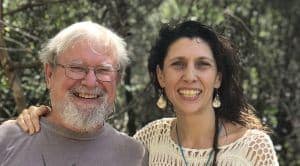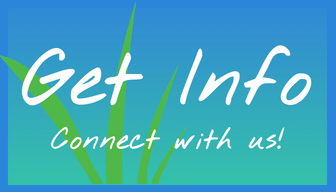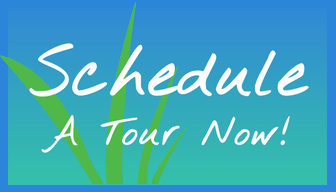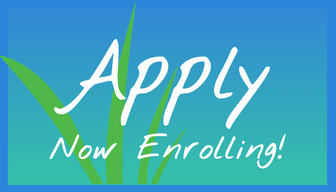 A Conversation between Frank and Amanda about their Upcoming Workshops on the Art of Presence and Anatomy Essentials and Techniques for Chair Massage
A Conversation between Frank and Amanda about their Upcoming Workshops on the Art of Presence and Anatomy Essentials and Techniques for Chair Massage
Frank: One of the first things that I would like to ask, is how did you get the idea to want to start doing chair massage as part of your practice?
Amanda: So, when my husband and I got back from living in Ecuador where for a couple of years I was teaching Visual Anthropology at a graduate school, and I had a small baby, so I didn’t want to be in the academic lifestyle that is all-consuming, and I wanted to be able to do something at Farmer’s Market because I love the environment, and I wanted to do something that integrated my massage training, so I decided to do chair massage at market.
Doing chair massage has worked out great for meeting all of those goals, and it has become this really beautiful way of meeting my life needs on “my own terms” as Paul D. would say. And monetarily it has worked out a whole lot better than what I was doing before at the market. I appreciate that it doesn’t take much extra time outside of the time that you are doing it along with a little bit of research here and there, but nothing like academe. You just need to offer a safe space, and people come with their variety of issues, and you can touch people who are just walking by and getting their vegetables or getting a cup of coffee. So, it doesn’t have to be this “oh I have to schedule a time, and take time out of my day.” Instead, it’s a really quick and easy way of helping people find relief in their daily lives.
Frank: Have you taken it anywhere besides the farmer’s market?
Amanda: I have. I go to businesses that hire me and I subcontract with other companies and bring chair massage to help their staff and employees. Sometimes it’s a once a year thing and sometimes it’s a once a month thing. It’s been great, because I go with a chair and some paper towels, and that’s about it, and I’m able to touch in to people’s lives. And in 15 to 20 minutes, sometimes less, I’m able to reach out and help people who often times have office jobs and need some relief primarily in their neck and shoulders.
Frank: So when you say touch in to people, what do you mean by that?
Amanda: I mean two main things. The first has to do with the part that I want to focus on in the Essentials and Techniques course with you, which is the anatomy, really feeling the client’s muscles, understanding their tensions, and helping them find physical relief. And, the second has to do with the ability to be present, to be fully aware that I’m with another human being, and that they recognize through my way of interacting that I care that they are another human being and that I care about their space, their life way, and that through my touch, starting with eye contact, starting with my presence, starting with my way of interacting or being with them in a common space, and then also my actual physical touch with their skin that there’s a communication that occurs, that is much much deeper. So when I say touch in, I mean the physical touch, and I mean that much much deeper somatic communication that occurs between souls, between somebody’s emotional, physical and spiritual state.
Frank: So you’re talking more body-mind than just the physical realm.
Amanda: Absolutely. I feel like that’s why many people really get affected so deeply by my massages because I’m not just working at that physical level, because we’re not just physical beings: we’re much deeper.
Frank: I’m always reminded that the body (and when I speak of the body, I speak of the total organism not just the muscles), and when the body is really met, it opens. And if it’s not really met, it doesn’t open as fully, it isn’t as able to receive the information. That’s something that I got really strongly out of my Trager training and my Trager practice.
Amanda: Yes. I wholeheartedly agree. That’s why I’m really excited about these workshops we’re creating. I feel like it’s such a perfect combination. You definitely understand that deep aspect of who we are as human beings and you have such an excellent knowledge of the physical aspects of where are the insertions, where are the origins, and if we’re specifically working on the shoulder for example, how to work the trapezius, how to work the rhomboids, how to work the erectors, in a way that’s really going to help relieve some pain.
Frank: Yes, and it really helps when you get a sense of the knowledge of referral patterns too. So, when someone comes in with something, for example, pain in their hand, it might be coming from the hand, and it might be coming from further up the line in the neck or the shoulder. It’s important to point out that we’re talking about two different classes that we’re offering here. We’re talking about the Anatomy Essentials and Techniques for Chair Massage, which is referring to the nitty-gritty of the muscles, how to use the hands, posture, and things like that, for which we’ll use body crayons to draw the muscles and the referral patterns on live bodies sitting in massage chairs along with specific massage techniques to incorporate into a 15-minute massage, and we’re talking about The Art of Presence, which is accessing the Parasympathetic. So tell me a little bit more about the second one?
Amanda: Gladly, for me, that’s the really exciting one! And although we are offering for people to choose either class, I hope that most are able to take both so they really get the benefit of the information and the experience of both together. I feel like anatomy, you really can learn from a book, from touching people, from apps, and it’s readily available in a lot of classes.
Yet, I feel like The Art of Presence, is a special kind of embodied knowledge of how to somatically communicate with another being. The class we’re offering, will be loosely directed at chair massage, though readily available for any modality of massage and honestly, I would say for any human encounter. Indeed, it is being able to take people deeper in their way of interacting and emotionally accessing another person’s life experience.
So we will guide people through exercises that encourage meaningful connection that can include something as simple as eye contact, first touch, and mirroring, along with exercises from contact improvisation, which models engaged two-way followers in a deeper line of communication that involves and goes beyond the physical state. I especially mean it at the deeper level of really developing that intuitive sense of feeling, of listening through your fingers, allowing your own body, your own mind-body, emotional state to be open to what is this other person feeling and experiencing in their world that you are sharing for a tactile moment in motion?
Frank: You know one of the things that was really impactful to me in my development was the realization that whenever I work on somebody, it comes from my nervous system, transfers through my touch to their nervous system, and comes back, so there’s always a two-way communication going on, and if I’m really able to be a part of that communication then the work goes deeper, and is more effective.
Amanda: Yes. Exactly! It goes deeper, and it is more effective. Even in a chair massage, which is such a limited period of time to get someone to a parasympathetic state. Right up front I typically tell people I don’t do hour massages, I do hour and a half massages, and often two hours, so that people can really access that parasympathetic state and get real healing. So, I find it humorous that at the same time that that’s what I offer for people in my table and Thai work, that I do chair massage, which is attempting to get people to that state in a 15 to 20 minute very limited time period. I feel rewarded though that many people who begin with a tentative 10 minutes will often request me to double the time and sometimes triple it, and most when they stand up from the chair have the sweet, dreamy eyes of deep relaxation and use their words to express such gratitude for my help in pain relief and acknowledge that the presence that they can feel though my touch allows them to go deep into their own state of consciousness.
And often, their bodies are able to tell my receptive fingers where to go, how to move, and which massage technique to use. It is this somatic communication aspect that I am currently researching through an institute I co-created with Nita Little (one of the founders of Contact Improvisation) called the Institute for the Study of Somatic Communication. I am fascinated by its possibilities and can’t wait to share this work with more massage therapists.
Frank: How has the chair massage work affected your massage practice? Has this fed your other business?
Amanda: Yes. Dramatically. Since we moved back into town after being gone for a couple of years, I had to start brand new. Chair massage has offered me most of the clients that I see during the week in my office.
Frank: I’ve also found that when I’ve gotten clients, it is when they’ve gotten to feel my touch then they’ve booked an appointment with me.
Amanda: Yes. That is exactly what happens. I have some pointers that I will share on this business aspect too in the class that have worked extremely well for me.
Frank: I think this will be a fun experience offering this course with you. I look forward to it.
If either of these classes look like something you think would benefit your practice, contact Frank Merillat directly at fmerillat@mac.com or call 352 371-0743 to register. You can also check out the class information on the FSM workshop page.



